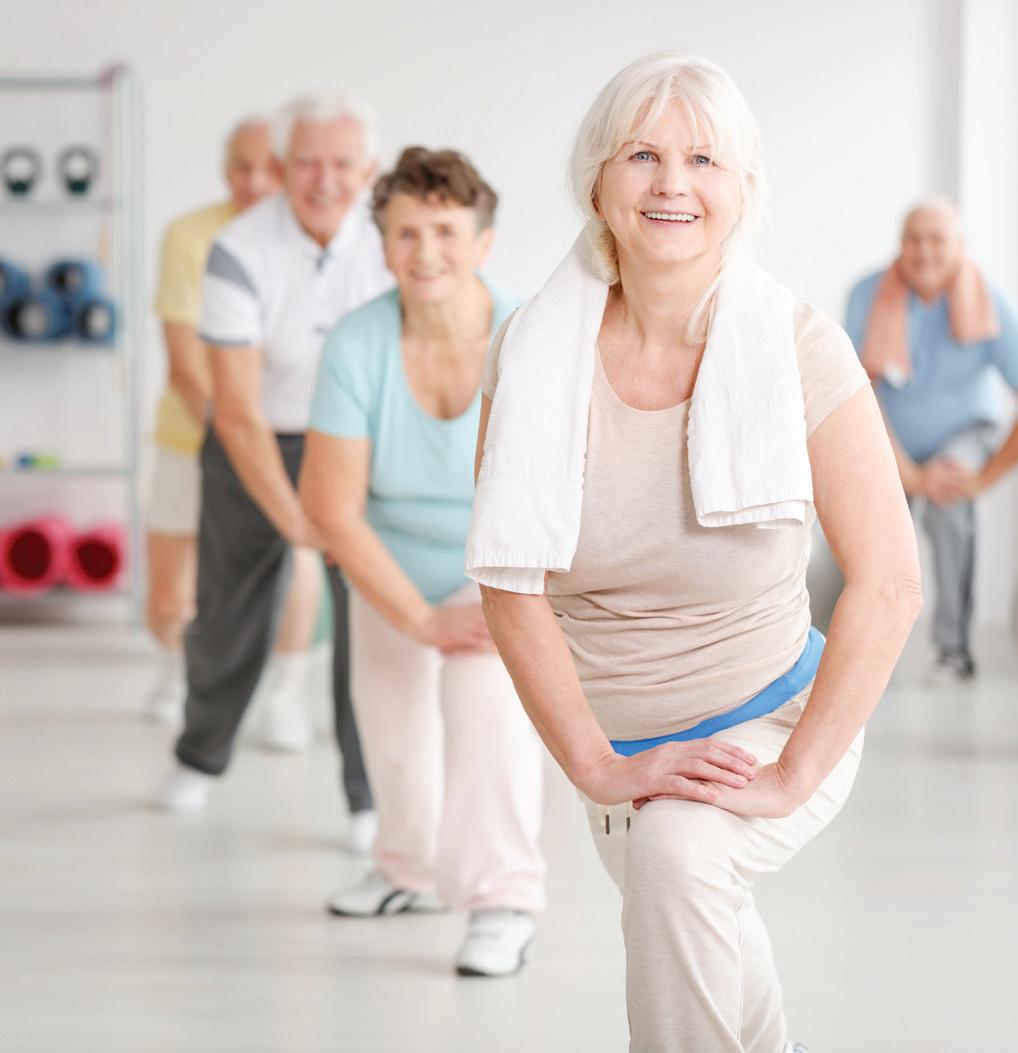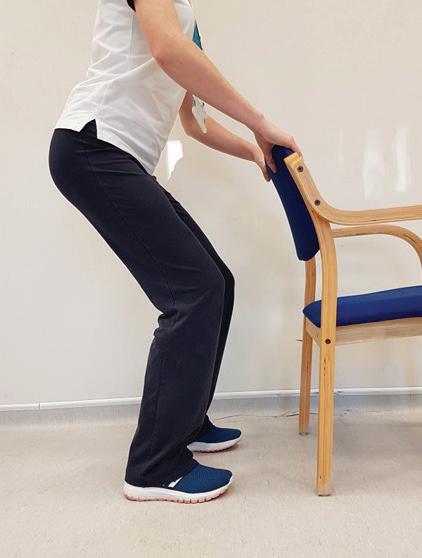Hip Osteoarthritis Information, Answers and
Self-help Strategies
Frequently asked questions
What is osteoarthritis?
Osteoarthritis (OA), commonly known as ‘wear and tear’ is a normal, age related process that affects the joints. The joint structures can become painful, which can cause stiffness and affect movement and mobility.

What causes osteoarthritis?
There are many factors that contribute to osteoarthritis:
1 Age: OA usually starts in the late 40s.
2 Gender: OA is more commonly seen in females.
3 Body weight: is a known risk factor for OA.
4 Previous joint injury or surgery: can increase the risk of OA.
5 Genetic factors: having a family history of OA can increase the likelihood of developing the condition.
What are the symptoms?
Common symptoms include tenderness, stiffness, pain, and creaking (crepitus). Morning stiffness lasting for up to half an hour or up until you get going is also a common presentation.
It is common to experience periods of little pain and then have phases of elevated pain. These are commonly known as a ‘flare up’, and can occur following an increase in activity, but this is not always the case. It can be common for the pain to refer into the groin and down the front of the leg.
How is osteoarthritis diagnosed?
An x-ray is commonly used to confirm diagnosis. The x-ray picture may show joint space narrowing and bony spur formations in and around the joint. OA tends to develop over time and symptoms can be variable, and does not always relate to the severity seen on x-ray. Your physiotherapist can also diagnose this following a clinical assessment and an x-ray is not always needed.

18785-PH-03
CONTINUED OVERLEAF providephysiotherapy.org.uk PAGE 1 [OF 4]
Hip Osteoarthritis
What is the outlook?
Early on you should be able to manage your condition with simple pain relief medication and keeping fit, strong and active will help. Not everyones pain gets worse over time and for many people this will be enough. This will allow you to live a very normal life, enabling you to continue with most activities and hobbies.
Management
Weight management
Being overweight can result in up to five times more force being placed on your joints during walking, running and stairs for example. Being overweight and eating a unhealthly diet also increases inflammation in your body which is unhelpful for osteoarthritis. Further guidance on weight management strategies can be found at:
essexwellbeingservice.co.uk
Exercises
Exercise is important as it can help you to lose weight, strengthen muscles, ease stiffness and enable you to complete activities of daily living. It can also improve mental and social wellbeing. There are two main types of exercises:
Strengthening exercises. The purpose of strengthening exercises is to improve joint stability and enhance confidence.
Aerobic exercises. These come in many different forms, from gentle and fast-paced walking to gardening and swimming. The purpose of aerobic exercise is to improve your general health, lose weight and release hormones such as endorphins which can help with pain relief.
Walking aid

Firstly, ensure you wear supportive footwear with cushioned soles as this can help ease any impact through the joints. Walking with a frame or stick can also help ease pressure and further aid mobility. If walking and balance are a problem, your health care practitioner may refer you to a ‘strength and balance’ or ‘falls prevention’ class.
CONTINUED OVERLEAF PAGE 2 [OF 4] providephysiotherapy.org.uk
Information, Answers and Self-help Strategies
Pain medication and anti-inflammatory drugs
Speak to your local pharmacist or GP for advice on pain medication to help ease your symptoms. Ensure you take the recommended dosage to gain optimal benefits.
Orthopaedics
If your symptoms worsen over time, the pain might start to significantly impact your day to day life or disturb your sleep. You may then want to discuss with your GP or physiotherapist about your suitability for a hip replacement. Your healthcare practitioner may refer you to orthopaedics for further review.
Exercises for hip osteoarthritis
As a guide, start with two to three sets of 10 repetitions of each exercise and work through the stages as you progress. If zero is no pain, you should have no more than four out of 10 pain when exercising. Ensure your pain is not worse the following day as there can sometimes be a delayed response.
Hip flexion
1 Standing on the floor, gently raise your affected leg by bringing your knee towards your chest.
2 You may hold onto a support to start off with to steady yourself. Repeat eight to 10 times.

Hip abduction
1 Standing on the floor, holding on for support. Gently raise your affected leg to the side whilst keeping your legs straight.
2 Ensure you keep your trunk straight to avoid compensation. Repeat eight to 10 times.

CONTINUED OVERLEAF
PAGE 3 [OF 4] providephysiotherapy.org.uk Hip Osteoarthritis Information, Answers and Self-help Strategies
Mini squats
1 Standing with both feet shoulder width apart, bend both knees whilst keeping your back straight and feet on the floor.
2 Avoid more than 90 degrees knee bend. Repeat eight to 10 times.
Hip extensions
1 Holding on for support, gently bring your affected leg back.
2 Ensure to keep an upright posture during the movement. Repeat eight to 10 times.


Further information
‘Managing My Musculoskeletal Health’ information leaflet is available or will be given to you by your physiotherapist if you are unable to access our digital self-management resources.
If you can access online resources, our physiotherapists recommend you use the self-help section of our website for information and support with specific MSK conditions and injuries
Our free NHS Mid and South Essex getUBetter app for an easy, safe and effective way to help you self-manage your MSK condition or injury.
If you feel you still need physiotherapy input, please complete a self-referral to the Physiotherapy team.
If you have any questions please contact the Care Co-ordination Centre on:
QR Links: Managing My Musculoskeletal Health Self-help section getUBetter app Self-referral Follow us on social media: /ProvidePhysiotherapy @ProvidePhysio @ProvidePhysiotherapy
0300 131 0111 provide.askus@nhs.net PAGE 4 [OF 4] providephysiotherapy.org.uk Hip Osteoarthritis Information, Answers and Self-help Strategies







